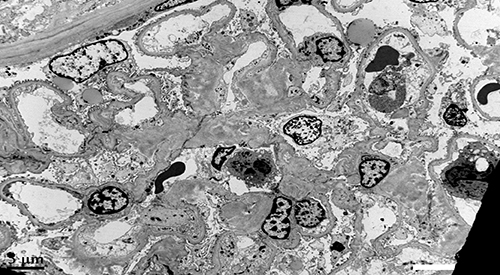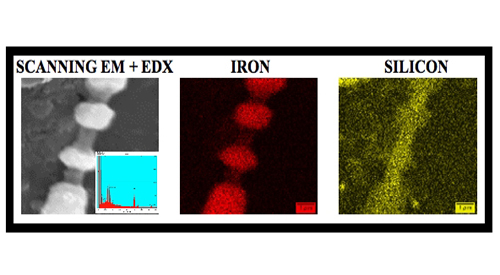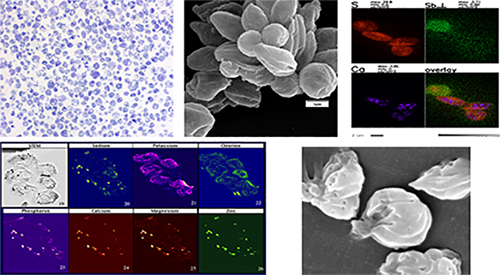VHA Diagnostic Electron Microscopy Program
Goals of the Diagnostic Electron Microscopy Program
The Diagnostic Electron Microscopy Program will provide the optimum standard of care to VA patients with a specialized modality--electron microscopy--for enhancement of diagnosis through study of tissue and cell ultrastructure. Specifically, the program will promote the use of ultrastructural examination to resolve challenging diagnostic problems, encourage and facilitate training in ultrastructural pathology, and foster the development and application of new ultrastructural findings and techniques for patient care. The National Diagnostic EM Program is also responsible for facilitating the sharing of available technical capabilities and diagnostic expertise of designated VA EM laboratories among all laboratories and with other government medical facilities.
Clinical Diagnosis
Quality Assurance
Research and Education
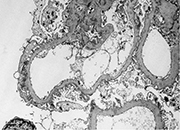 Clinical Diagnosis
Clinical Diagnosis
- To provide a specialized modality--Electron Microscopy--for enhancement of clinical diagnosis and research through the study of tissue and cell ultrastructure.
- To resolve diagnostic problems which cannot be settled at the light microscopic level.
- To permit the development and rapid exploitation for patient care needs of the new diagnostic findings and techniques which are constantly being found through ultrastructural research.
- To facilitate training of residents, staff physicians, research investigators and selected technical personnel in the use of electron microscopy
 Quality Assurance
Quality Assurance
The Clinical Laboratory Improvement Act has mandated the type of quality assurance reviews performed in many other areas of Pathology and Laboratory Medicine Service. No comparable peer review program for diagnostic electron microscopy is available commercially or through academic societies or accrediting organizations. Therefore VHA Pathology and Laboratory Medicine Service in VA National Headquarters has established and maintains a rigorous program for quality monitoring of all VA hospitals performing diagnostic electron microscopy. The overall goal is to promote the highest quality of diagnostic care for Veterans through continuous improvement initiatives. The annual EM program reviews provide measurable quality assurance indicators on each individual program and the VA-wide EM program in general. Specific criteria for excellence include that the EM study be clinically relevant and at a minimum contribute to or change the structural diagnosis to enhance the appropriate treatment modality for the clinical problem.
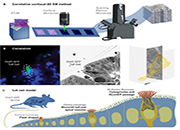 Research and Education
Research and Education
The EM Program has parallel mandates in research and education. These are to support VHA research efforts requiring electron microscopy in experimental studies of disease processes at the cellular and subcellular levels and to provide training for residents, staff physicians, research investigators and technical personnel in the use of electron microscopy. Success of these efforts is reflected in the many peer reviewed publications of VHA researchers and clinicians that utilize electron microscopy as a tool to understand structure-function correlations in cells and tissues.
Role of Diagnostic Electron Microscopy in
Veterans' Health Care
Electron Microscopy (EM) remains the gold standard for diagnosis of many kidney, muscle, nerve, lung and skin diseases, The value of electron microscopy in difficult diagnostic situations has been demonstrated repeatedly in treatment of Veterans with these diseases. Within the VA network of hospitals there are excellent facilities for Electron Microscopy, staffed by physicians with special expertise in ultrastructural pathology. They work in close coordination with clinicians who use the EM diagnosis along with results of other testing modalities to determine the best course of treatment for the patient. The key stakeholder value in the EM Program for the veteran patient is in obtaining the most appropriate treatment protocol based on the ultrastructural pathology and findings of the case. Conversely, our Veteran patients are the reason for the program to exist.
Benchmarks for Quality in Ultrastructural Pathology
The Diagnostic Electron Microscopy (EM) Program, supported by VACO Pathology and Laboratory Medicine Service and the VHA Employee Education System, organizes a series of webinars annually that are designed to address new findings as well as practice changes in Ultrastructural Pathology/EM that arise as standards of care in Anatomic Pathology evolve. Additionally, the sessions provide updates on best practice criteria for diagnostic histology as correlated with electron microscopy. These virtual meetings feature world-renowned experts in specialized areas of ultrastructural pathology. They present comprehensive lectures on areas as diverse as pathology and pathogenesis of viruses, e.g. Zika, Ebola, and renal transplant pathology. The series is accredited via the Accreditation Council for Continuing Medical Education (ACCME) and ACCME-Non-Physicians (NP).
View the most recent webinar now, The Role of Electron Microscopy in Evaluation of Asbestos-Related Diseases Among US Veterans.














